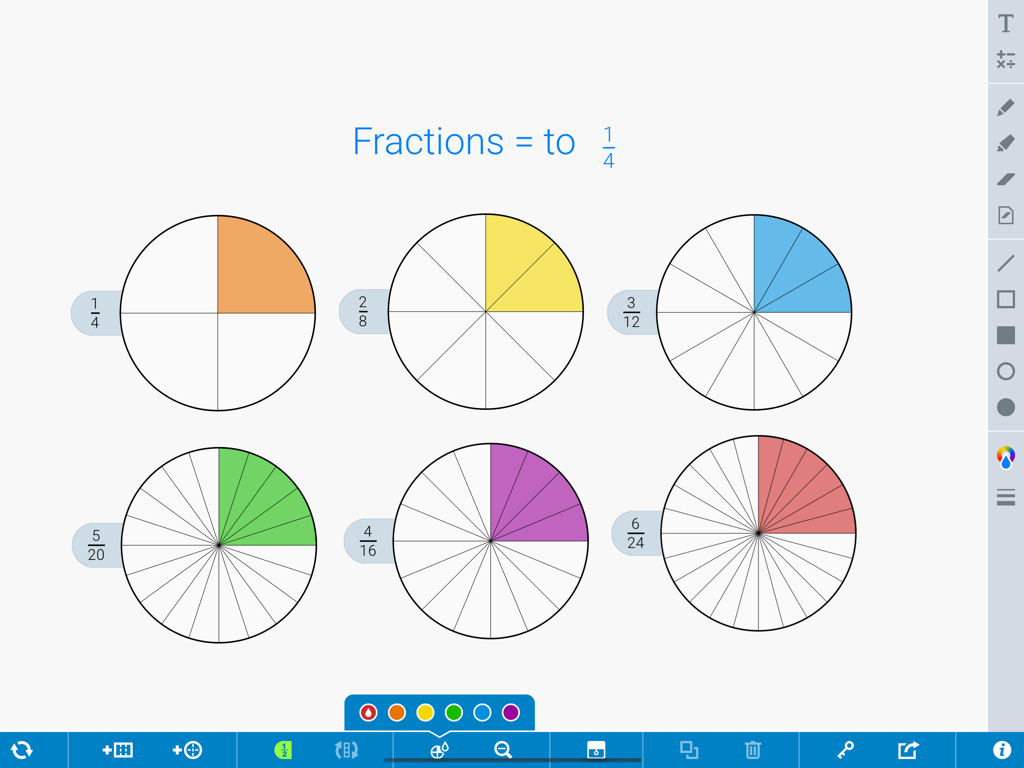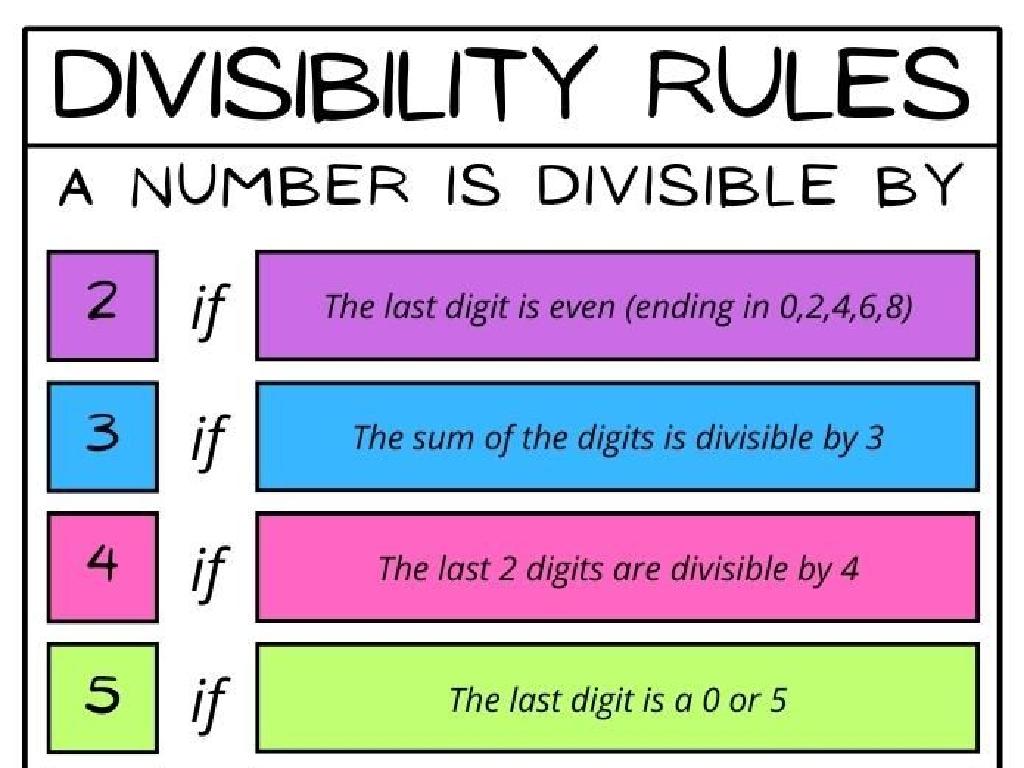The Bill Of Rights
Subject: Social studies
Grade: Sixth grade
Topic: The Constitution
Please LOG IN to download the presentation. Access is available to registered users only.
View More Content
Welcome to the Bill of Rights!
– Our Fundamental Rights
– Rights essential for freedom & protection
– Constitution: Our rule book
– The Constitution sets laws for the nation
– Bill of Rights Overview
– First 10 amendments of the Constitution
– Today’s lesson focus
– Understanding each right’s importance
|
This slide introduces the Bill of Rights as a crucial part of the United States Constitution, which outlines the fundamental rights and freedoms every citizen is entitled to. Emphasize the Constitution’s role as the supreme law of the land and how it governs our society. The Bill of Rights, consisting of the first ten amendments, specifically guarantees personal freedoms and legal protections. Today’s lesson will delve into each of these amendments, discussing their significance and how they impact our daily lives. Encourage students to think about rights they already know and how they believe these rights help protect them and their loved ones.
Understanding the Constitution
– The Constitution: Our legal bedrock
– It’s the set of fundamental principles by which our country is governed.
– Crafted in 1787, effective from 1788
– After being written, it was agreed upon and made the law of the land.
– Outlines our government’s framework
– Describes the roles of the three branches: legislative, executive, and judicial.
– Ensures checks and balances
|
The Constitution is the supreme law of the United States, forming the foundation for its governance and legal authority. Written during the Philadelphia Convention in 1787, it was ratified the following year and has been in effect since. The document outlines the structure of the federal government, including the separation of powers into three branches: legislative (Congress), executive (President), and judicial (Supreme Court). This separation ensures a system of checks and balances, where no single branch holds too much power. It’s crucial for students to understand the Constitution’s role in shaping our nation’s laws and government operations. Encourage them to think about how these principles affect their daily lives and the importance of each branch in maintaining a balanced government.
Introducing the Bill of Rights
– First 10 amendments explained
– The Bill of Rights consists of the first 10 amendments to the US Constitution.
– Added in 1791 for liberty protection
– These amendments were adopted to safeguard personal freedoms and rights.
– Lists government power limits
– They outline what the government cannot do, ensuring citizens’ liberties.
– Foundation of American freedoms
|
The Bill of Rights is a crucial element of American history and the Constitution. It was ratified in 1791, consisting of the first ten amendments. These amendments serve to protect individual liberties and ensure that the government does not overstep its bounds. The rights included are fundamental to the American way of life and include freedoms such as speech, religion, and the press, as well as protections against unreasonable searches and seizures. When discussing this topic, emphasize the importance of these amendments in everyday life and how they form the bedrock of American civil rights and liberties.
Why the Bill of Rights?
– States demanded more protection
– Some states wouldn’t ratify without more rights
– A compromise for personal freedoms
– The Bill of Rights protects citizens’ freedoms
– Balances federal and state powers
– It limits federal power, giving states more control
– Ensures individual liberty
|
The creation of the Bill of Rights was crucial to the ratification of the Constitution. Several states were concerned about the lack of explicit protections for individual liberties and were hesitant to ratify the Constitution without these guarantees. As a compromise, the first ten amendments, known as the Bill of Rights, were introduced to protect personal freedoms and ensure a balance of power between the federal government and the states. This balance was intended to prevent any single entity from becoming too powerful and to protect citizens from government abuse. In class, discuss specific freedoms protected by the Bill of Rights and why they were important to the founding states.
Exploring Key Amendments in the Bill of Rights
– Freedom in the 1st Amendment
– Guarantees freedom of speech, religion, and press
– 2nd Amendment: Right to bear arms
– Grants the right to own and use weapons
– 4th Amendment: Search & Seizure
– Protects against unwarranted searches of property
|
This slide introduces students to three important amendments within the Bill of Rights. The 1st Amendment is crucial as it ensures individuals can express themselves freely, practice any religion, and have a free press. The 2nd Amendment is about the right to own guns, which is a significant topic in American history and culture. The 4th Amendment safeguards citizens from the government searching their property without a good reason, usually requiring a warrant. These amendments are foundational to understanding American civil liberties and the rights of individuals. Encourage students to think of examples of how these rights are applied in everyday life and discuss the importance of each right.
Rights and Responsibilities in the Bill of Rights
– Understanding the Bill of Rights
– The first 10 amendments of the Constitution, protecting freedoms
– Rights paired with responsibilities
– With freedom of speech comes the responsibility to not harm others with our words
– Examples of responsible citizenship
– Voting, volunteering, and respecting others’ rights
– Balancing rights with community welfare
– Ensuring our actions respect the rights and well-being of others
|
This slide aims to help students grasp the concept of individual rights as outlined in the Bill of Rights, while also understanding that these rights are accompanied by responsibilities. Emphasize that the freedoms guaranteed by the Bill of Rights, such as speech, religion, and assembly, are not absolute and must be exercised with consideration for others. Provide relatable examples of responsible citizenship, such as participating in community service or being informed when voting. Discuss the importance of balancing personal rights with the needs of the community to maintain a harmonious and just society. Encourage students to think of ways they can be responsible citizens in their daily lives.
The Bill of Rights in Our Lives
– Real-life protection examples
– Freedom of speech allows voicing opinions without fear.
– Daily impact of amendments
– Amendments ensure fair treatment and freedom in daily activities.
– Discussing rights importance
– Why are these rights crucial for us? Consider equality and justice.
|
This slide aims to make students understand the practical applications of the Bill of Rights in everyday life. Start by discussing scenarios where these rights protect individuals, such as the freedom of speech in expressing opinions. Highlight how the amendments impact daily activities, like the right to privacy or protection against unreasonable searches. Engage the class in a discussion about the importance of these rights, emphasizing the role they play in maintaining a fair and just society. Encourage students to think of questions or situations where they believe the Bill of Rights has an effect on their lives or the lives of those around them.
Class Activity: Bill of Rights in Action
– Divide into groups for discussion
– Present a rights scenario
– Each group picks a real or hypothetical situation
– Explain the relevant amendment
– Relate the scenario to one of the first ten amendments
– Vote on rights application
– Class decides if the rights were respected or infringed
|
This activity is designed to help students apply their knowledge of the Bill of Rights to real-life scenarios. By working in groups, students will engage in critical thinking and debate. Each group should choose a scenario that could happen at school or in their community, discuss which amendment applies, and prepare a short presentation for the class. After each presentation, the class will vote and discuss whether the rights were upheld or violated in the scenario. This will not only deepen their understanding of the amendments but also foster a sense of civic responsibility and awareness. Possible scenarios could include freedom of speech at a school event, the right to privacy with school lockers, or protection against unreasonable search and seizure.
Reflecting on the Bill of Rights
– Recap the Bill of Rights
– Discuss its importance
– The first 10 amendments protect our freedoms
– Open floor for questions
– How to uphold these rights
– Consider ways to respect and protect rights in daily life
|
This slide aims to summarize the key points of the Bill of Rights and its crucial role in American democracy. Begin by recapping the main freedoms protected by the first 10 amendments. Emphasize the significance of these rights in maintaining a free society. Open the floor for any questions the students might have, fostering an interactive discussion. Encourage students to reflect on the importance of these rights in their own lives and how they can actively participate in upholding these principles. This reflection will help them understand their role as active citizens and the importance of the Bill of Rights in everyday life.

/civil_war_history_materials.jpg)




